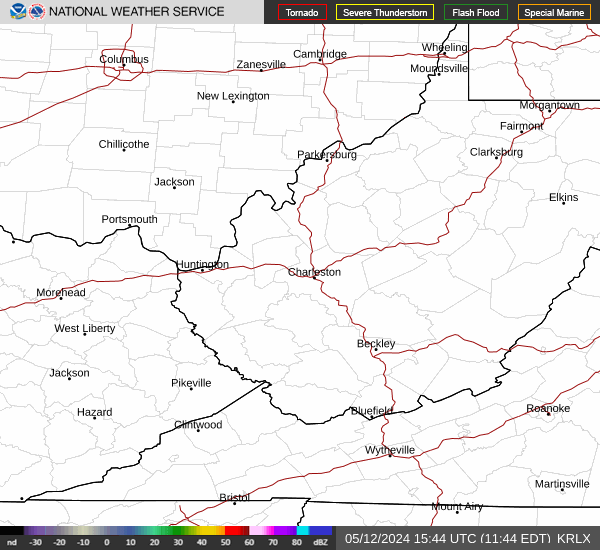Issued: 7pm on Sunday, April 13th 2025
Technical Forecast Discussion
Short-term Forecast (Sunday 04/13/2025 through Tuesday 04/15/2025):
Currently, a deep shortwave trough is exiting the eastern United States, with the Ohio region entering a growing ridge. As a result, tonight will observe warmer temperatures and slight higher pressure around 1018 mb, though pressure will decrease as upper-level forcing from a growing shortwave trough pushes it eastward as well. The associated surface cyclone will have already undergone occlusion by 06Z Monday as it positions itself in northern Minnesota. Throughout the day on Monday, the upper-level trough will continue to build as the upper-low deepens, and an offset of the surface low and upper low due to a positive trough tilt will allow for the surface cyclone to continue to strengthen despite the occlusion. As a result, a more potent yet contained warm front will pass through the region late Sunday into Monday, promoting stratiform precipitation throughout the night. With low-level temperature and moisture advection present throughout the day on Monday alongside ample shearing as a result of the deepening trough, a severe setup is possible on Monday. However, this setup is complex and highly situational. Models currently report a high surface temperature in the mid 70s and surface dewpoints in the upper 50s, which will support a low LCL and LFC. Some models furthermore resolve a dry layer between 750-800 mb, which could support further parcel cooling with height, though this is currently debated. Despite a robust elevated mixed layer, as a result of sporadic cloud cover throughout the day due to the shrinking warm sector and presence of low-level saturation throughout the day, CAPE profiles are very localized, with regions of West Virginia and East Kentucky consistently simulating values between 1000-1500 J/kg, and areas in Southeast Ohio observing greater model disagreement for similar values, and generally lower values of CAPE regardless. The greatest argument for severe storms results from low-level shear profiles. Once again, generally more favorable 0-3 km shear is present in East Kentucky and WV, while disagreement is rampant through SE OH. However, SRH values alongside easterly mean flow behind the warm front are not unfavorable for the development of supercells, and despite concern in predominantly westerly veering and little curvature in the 0-3 km and 0-1 km, the possibility of a few tornadoes, hail, and strong winds cannot be ruled out. Notably, hail-producing supercells are more possible than tornado producing supercells in the SE OH area due to PW less than 1.25 in, freezing levels around 700 mb, and uniformity in 0-6 km flow with decent low-level speed shear, despite a general lack of CAPE. However, greater chances of these severe hazards have been consistently observed further southeast, and less so for the SE-Central OH region. The final complication stems from the timing of the passage of the cold front, as current models disagree on the speed of the cold front’s progression. A slower progression will allow for greater CAPE to build in SE OH, and possibly a greater chance of severe storms than if the cold front progressed quickly, which would result in convective initiation in WV instead. Observations of the low’s initialization, progression of fronts, and low-level saturation throughout peak heating hours will be crucial to forecast the location and feasibility of Monday’s severe threat. Regardless of this timing, the cold front will have passed through the region by 00Z Tuesday, with a fairly deep, robust, and neutrally-tilted trough settling over the area. As a result, a strong temperature swing back to the mid 50s is likely, and low-level saturation is likely due to the occlusion of the low. This could lead to more overcast skies throughout Tuesday alongside light, stratiform precipitation. Additionally, wind gusts up to 30 mph could be observed Tuesday due to the strong pressure gradient the low will have generated.
Long-term Forecast (Wednesday 04/16/2025 through Saturday 04/19/2025):
The deep occlusion of the surface low pressure and the continued upper-level support from the shortwave trough will continue to promote colder temperatures throughout Wednesday. However, Ohio will be located upstream of this trough by 12Z Wednesday, and growing high pressure in the South-Central United States will allow for clear skies despite still gusty winds from the pressure gradient. As 1024 mb higher pressure is maximized in the SE OH region by 12Z Thursday, a growing ridge over the Great Plains will promote warm air advection, resulting in daytime highs in the upper 60s on Thursday. However, a familiar Omega-Block pattern can be observed across the contiguous United States on Thursday, which will introduce a complex setup of weather into the region. The presence of deep upper-lows on the western and eastern US coasts will induce a strong ridge over the Central US. However, upstream of this ridge, surface lows will develop within the left-exit and right-entrance regions of the associated prevalent jetstreak at 300 mb. The left-exit low, which is fairly underdeveloped by 12Z Friday, will have moved its associated warm front into the Ohio Valley, inducing greater cloud cover and warming back to the high 70s as the warm sector moves through the region during peak heating hours. However, without strong upper-level support, the left-exit low and right-entrance low will fill, leaving a weak residual cold front whose movement becomes induced more so by a strong surface high pressure that developed from the left-entrance region of the jetstreak. This cold front will pass through during the morning/afternoon of Saturday, returning clouds and precipitation along its leading edge, and cooler temperatures and stable air pushing in behind it from the higher pressure.




